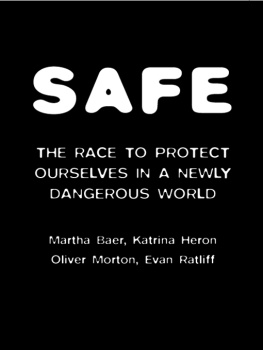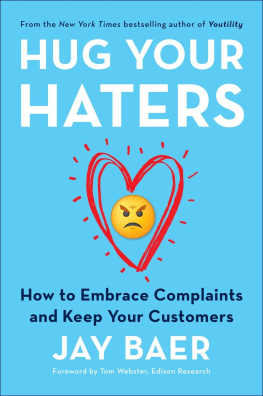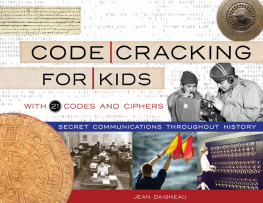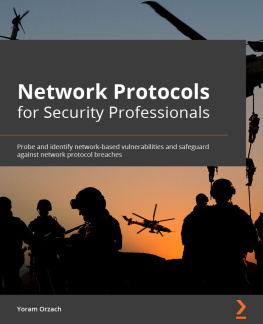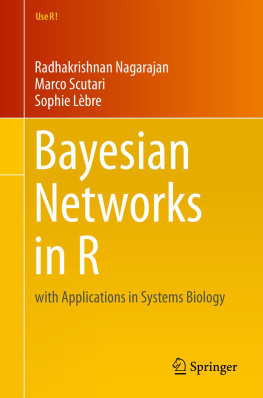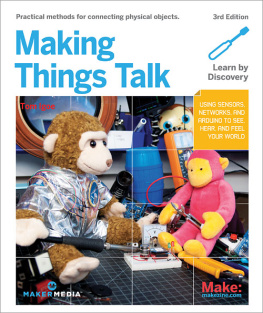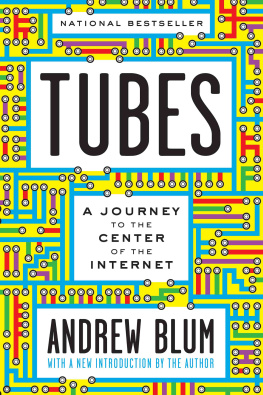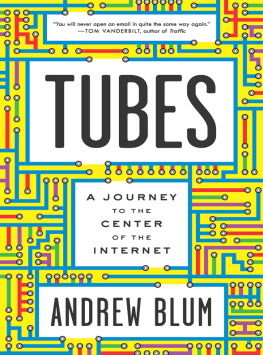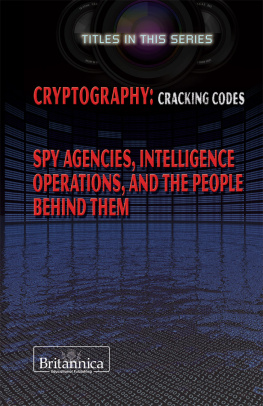Baer - Safe: the race to protect ourselves in a newly dangerous world
Here you can read online Baer - Safe: the race to protect ourselves in a newly dangerous world full text of the book (entire story) in english for free. Download pdf and epub, get meaning, cover and reviews about this ebook. City: Etats-Unis dAmérique;United States, year: 2009, publisher: HarperCollins e-books, genre: Politics. Description of the work, (preface) as well as reviews are available. Best literature library LitArk.com created for fans of good reading and offers a wide selection of genres:
Romance novel
Science fiction
Adventure
Detective
Science
History
Home and family
Prose
Art
Politics
Computer
Non-fiction
Religion
Business
Children
Humor
Choose a favorite category and find really read worthwhile books. Enjoy immersion in the world of imagination, feel the emotions of the characters or learn something new for yourself, make an fascinating discovery.
Safe: the race to protect ourselves in a newly dangerous world: summary, description and annotation
We offer to read an annotation, description, summary or preface (depends on what the author of the book "Safe: the race to protect ourselves in a newly dangerous world" wrote himself). If you haven't found the necessary information about the book — write in the comments, we will try to find it.
Baer: author's other books
Who wrote Safe: the race to protect ourselves in a newly dangerous world? Find out the surname, the name of the author of the book and a list of all author's works by series.
Safe: the race to protect ourselves in a newly dangerous world — read online for free the complete book (whole text) full work
Below is the text of the book, divided by pages. System saving the place of the last page read, allows you to conveniently read the book "Safe: the race to protect ourselves in a newly dangerous world" online for free, without having to search again every time where you left off. Put a bookmark, and you can go to the page where you finished reading at any time.
Font size:
Interval:
Bookmark:
T HE R ACE TO
P ROTECT O URSELVES
IN A N EWLY D ANGEROUS W ORLD
Katrina Heron
Oliver Morton
Evan Ratliff

Lifelines
Behavior and Betrayal
Inside the Internet
Mortal Buildings
Biology Lessons
Being Bioprepared
Living Clues
Common Sensors
A Storm in Any Port
The Network of Networks
Cracking Codes
The Dangers of Data
The Power of the People
O N THE MORNING of September 11, 2001, virtually all of us, from ordinary citizens to supposedly well-informed leaders, were shocked to discover that a very small, secretive, and incredibly destructive enemy we knew little about could truly hurt us; that this enemy understood more about the routine functions of our world than many of us did; and that this enemy could infiltrate our physical space with utter ease. We were shortly to learn that this enemy had been diligently studying a host of technological developments we tended to take for granted in our lives, looking for ways to create catastrophe. Suddenly our navet came face-to-face with the enemys deeply informed intentions. It made for a rude awakening.
The question How could this have happened? has still not been fully answered, and what answers there have been are genuinely troubling. We have learned that our intelligence agencies were woefully ill equipped to safeguard us against terrorist attack; that our homeland-defense strategy was a muddled collection of separate, and often conflicting, directives; that our emergency-response capabilities were tragically lacking; and that our entire national infrastructurefrom our water supply and electrical grid to transportation and industrial and telecommunications networksremains vulnerable to future harm.
The fact that passenger planes were turned into missiles was a horrific reminder, on the cusp of the twenty-first century, that technologys potential for good is coupled with the possibility for immense destruction. At the same time we were whipsawed by the revelation that terrorists had passed unimpeded through all the security checkpoints and used weapons no more sophisticated than box cutters. But a larger realization was hovering uneasily at the edges of our consciousness: We were used to seeing our technologies as discrete objects (jetliner, skyscraper), when the more accurate way to see them is as parts of linked and complex systemssystems capable of many possible interactions and outcomes, systems full of possible glitches, systems in need of constant vigilance. The enemy, while not better or smarter than us, had studied our technological systems far more creatively than we had ever anticipated.
Many of our systems failed that day in a cascade of unpreparednessair travel security, emergency radio and dispatch networks, the stock exchanges. In the first hours, the fundamental breakdown in information flow shackled those on the ground and those in the corridors of power. Firefighters and emergency personnel had charged headlong into the two doomed towers, while, as Richard Clarke recounts in the spellbinding opening chapter of his book Against All Enemies, a skeletal team at the White House struggled to somehow coordinate a response. Paul Wolfowitz, Deputy Secretary of the Department of Defense, called in from a remote location: We have to think of a message to the public. Tell them not to clog up the roads. Let them know we are in control of the airways. Tell them what is happening. Have somebody go out from the White House. Paul, Clarke writes he responded, there is nobody in the White House but us and no press on the grounds.
Other systems would fail in the days to follow, and many more would be found to have failed long before September 11. The more we probed our national vulnerabilities, the weaker our defenses appeared, and the more elusive the answer to our most pressing question: How do we prevent this from happening again?
Its a commonplace to observe that technology makes things better while at the same time making things worse. We now have ready proof that the openness and interconnectedness our technologies provideand on which we increasingly depend, not only in a practical sense but also as an expression of modern lifehave also created the potential for great danger. Put another way, innovations as magnificent and progressive as the Internet and its myriad applications trail evil twins. For all their popular applications, for all their potential to enrich our lives and our society, these technologies also make possible such dangers as untraceable terrorist communications, guerrilla cyberwarfare, and the seamless transfer of assembly instructions for known biological, chemical, and nuclear weapons as well as new genetically modified pathogens. As The 9/11 Commission Report noted, Terrorists [could] simply buy off the shelf and harvest the products of a $3 trillion-a-year telecommunications industry. They could acquire without great expense communication devices that were varied, global, instantaneous, complex, and encrypted.
Back before the unthinkable happened, we werent accustomed to seeing our technologies in light of their dangers. Whether as corporate CEOs or individual consumers, most of us were used to thinking of that cumbersome word technology just as a blizzard of ever-newer tools at our disposal, if only we could figure out which ones we really needed and wanted. If we felt like victims it was as the victims of marketing campaigns, exhortations to upgrade and add on, problems with equipment incompatibility, the nuisance of bugs and computer crashes, and the overall annoyance of finding that offerings supposedly designed to make our lives more efficient were often doing the opposite.
The world beyond our immediate graspbeyond the keys and screens of computers and cell phones, behind the cash from ATMs or even the water from the kitchen faucetwas veiled, invisible, or completely alien to most of us. This was in a way the apogee of a historical trend that took root at the beginning of the twentieth century, when developments in science and technology started moving with a speed and sophistication never before witnessed. An ever-widening gap grew up between the ordinary things most people knew and the extraordinary things a few people knew how to make. As advances in these areas accelerated and became increasingly specialized, with both positive and negative implications, it became harder to understand, discuss, or debate their profound effects.
We tolerated this growing knowledge gap in part because we couldnt see any handy alternative; it seemed an inevitable byproduct of the fact that an astonishing new frontier was accessible only to gifted inventors and visionaries. This cadre of experts seemed to speak their own, virtually untranslatable language. The stuff was just too damn complicated for most of us to follow. And the businesses that turned the new knowledge into products for us to consume were quite happy doing so in ways that allowed us to leave our ignorance intact. As long as it worked, we didnt need to know why it worked; when it didnt work, increasingly we just needed to know whom to call. (And if it couldnt be fixed, well, something newer was prepared to take its place.) There was dissent and argument, to be sure, but the learning curve in these areas was so steep that only a few could be said to know what they were talking about, and they didnt always have the skills, or the interest, needed to fill us in. Over time, a cultural rationale for being in the dark about technology took root: It was boring.
The authors of this book have spent a great deal of time thinking about the knowledge gapthe rift between the excluded and the exclusive, so to speak. We have confronted it regularly as writers and editors at Wired magazine, which was the first mass-market publication devoted to the cultural relevance of science and technology. We have explored this hidden, invisible, alien domain as enthusiastic storytellersfascinated, curious, aware of being alive in a time of extraordinary change and intellectual ferment, mindful that the technological future holds both promise and peril for the human race, and eager to find ways to bridge the knowledge gap.
Font size:
Interval:
Bookmark:
Similar books «Safe: the race to protect ourselves in a newly dangerous world»
Look at similar books to Safe: the race to protect ourselves in a newly dangerous world. We have selected literature similar in name and meaning in the hope of providing readers with more options to find new, interesting, not yet read works.
Discussion, reviews of the book Safe: the race to protect ourselves in a newly dangerous world and just readers' own opinions. Leave your comments, write what you think about the work, its meaning or the main characters. Specify what exactly you liked and what you didn't like, and why you think so.

